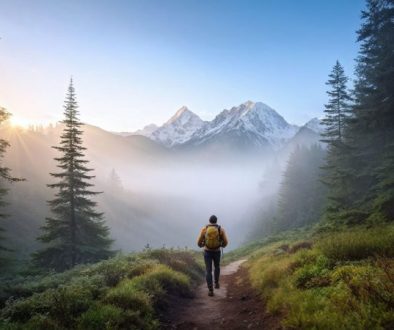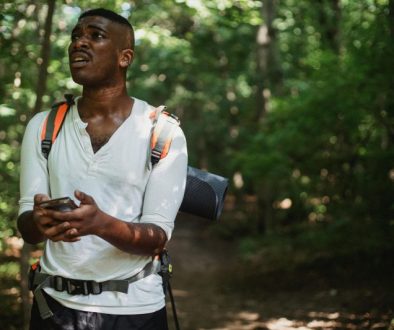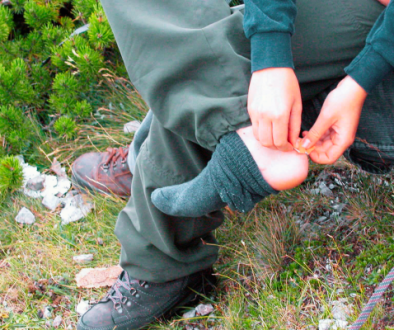Your Hiking Hydration Tips 2025, Water-You Waiting For?
Proper hiking hydration can make or break your outdoor adventure. Understanding how to stay hydrated while hiking is essential for your safety and enjoyment on the trail. Whether you’re exploring Victoria’s diverse landscapes or tackling challenging mountain paths, effective hydration strategies will keep you energised and safe.
Understanding Hiking Hydration Basics
What Happens When You Don’t Hydrate Properly
Dehydration occurs when your body loses more fluids than it takes in. During hiking, you lose water through sweating, breathing, and urination. Additionally, electrolytes like sodium, potassium, magnesium, and calcium are depleted through sweat.
The consequences of poor hiking hydration include:
- Muscle cramps and fatigue
- Dizziness and confusion
- Reduced coordination
- Potentially dangerous heat exhaustion
Key Electrolytes for Hiking Hydration
Understanding electrolytes is crucial for effective hiking hydration. Here’s what your body needs:
Sodium: Maintains fluid balance, nerve function, and muscle contractions
Potassium: Prevents muscle cramps and supports nerve function
Magnesium: Supports muscle relaxation and energy production
Calcium: Essential for muscle contractions and bone health
Chloride: Works with sodium to maintain fluid balance
Pre – Hike Hydration Preparation
Start Hydrating Before You Hit the Trail
Effective hiking hydration begins before you even lace up your boots. Consequently, you should drink 475-710 ml of water an hour before hiking. For longer adventures, begin hydrating 2-3 litres daily starting a week before your hike.
This “camel-ing up” approach prepares your body by hydrating organs and tissues. It ensures you start your hike in an optimal state.
What to Avoid Before Hiking
To maintain proper hiking hydration, avoid alcohol and excessive caffeine before your adventure. These substances contribute to dehydration. If you’re hiking in the morning, skip alcohol the night before entirely.
During – Hike Hydration Strategies
How Much Water Should You Drink While Hiking?
Proper hiking hydration depends on conditions and your body’s needs:
Moderate conditions: 250ml every 30-45 minutes (approximately 500ml per hour)
Hot/humid conditions or high altitude: Up to 1 litre per hour
General rule: Aim for 1 litre per 2 hours of hiking
Timing and Technique for Optimal Hiking Hydration
Don’t wait until you feel thirsty to drink, by then you’re already 1-2% dehydrated. Instead, drink small, frequent sips rather than large amounts. Set a timer every 15-20 minutes to remind yourself to drink.
This consistent approach to hiking hydration prevents the performance decline that comes with dehydration. Additionally, it helps maintain your energy levels throughout your adventure.
When to Use Electrolytes for Hiking Hydration
Recognising the Need for Electrolyte Replacement
Electrolytes become essential for hiking hydration when:
- Hiking longer than 1 hour in moderate conditions
- Hot weather or intense exertion with heavy sweating
- You notice salt crystals on your clothing after sweating
- Multi-day hiking or strenuous activities
Best Electrolyte Options for Hiking Hydration
From personal experience hiking in Victoria’s varied conditions, I’ve found that effective electrolyte management significantly improves the hiking experience. The benefits of getting minerals from electrolytes versus water alone are incomparable for fatigue, muscle cramps, and even cognition.
Commercial products: LMNT, Nuun, Liquid IV, Skratch Labs
Natural foods: Bananas (potassium), salted nuts, pretzels
DIY solution: Add table salt and fruit juice to water
I highly recommend LMNT for hiking hydration because it contains minimal ingredients and no sugar, with dosages that surpass those in other products.
However, my go-to method now is making my own electrolyte mix using Celtic Sea Salt, Magnesium, Potassium, and Essential Amino Acids.
Warning Signs: When Your Hiking Hydration Isn’t Working
Early Dehydration Symptoms
Recognising these signs early helps maintain proper hiking hydration:
- Thirst (indicates you’re already dehydrated)
- Dry mouth and sticky mouth
- Decreased energy and fatigue
- Headache
- Dark yellow urine
Moderate to Severe Symptoms
If your hiking hydration strategy fails, watch for:
- Dizziness or lightheadedness
- Nausea and vomiting
- Muscle cramps
- Confusion and irritability
- Reduced coordination
- Little to no urination
Low Electrolyte Symptoms
Poor electrolyte balance affects hiking hydration effectiveness:
- Salty foods taste unusually sweet
- Muscle cramps and weakness
- Nausea without feeling thirsty
- Fatigue and sluggishness
The Dangers of Overhydration
Understanding Hyponatremia
While focusing on hiking hydration, it’s crucial to avoid overhydration. Hyponatremia occurs when excessive water consumption dilutes blood sodium levels. This primarily affects ultra-endurance athletes and hikers on prolonged activities lasting more than 4 hours.
Risk factors include:
- Drinking more than 4 litres of plain water in hot conditions
- Prolonged exercise (4+ hours) with excessive fluid intake
- Smaller body size (dilutes blood plasma more quickly)
- Inadequate sodium replacement
Practical Hiking Hydration Systems
Carrying Water Efficiently
Choose the right system for your hiking hydration needs:
Hydration bladders: Allow drinking while walking without stopping
Water bottles: Easy to monitor intake and refill
Combination approach: Use both for convenience and backup
From my experience, packing plenty of water is more convenient than carrying insufficient amounts. I’ve tried both carrying a small bottle and a 3-4 litre water bladder. The latter is always the smarter choice, despite the extra weight, as it ensures you stay hydrated throughout the hike.
Capacity Recommendations for Hiking Hydration
Day hikes: 1.5-2 litres minimum
Hot weather: Add extra 1 litre per day
Special Conditions and Hiking Hydration
Hot Weather Hiking Hydration
Hot conditions require enhanced hiking hydration strategies. More Related Post.
- Hike early morning (sunrise to 11 AM) and late afternoon (3 PM to sunset)
- May require 6-8 litres of water for full day in extreme heat
- Wear light-coloured, loose clothing and take frequent shade breaks
High Altitude Hiking Hydration
Dry, thin air accelerates dehydration at altitude. Maintain the same intake recommendations of 1 litre per hour despite cooler temperatures for effective hiking hydration.
Multi-Day Hiking Hydration
Plan your hiking hydration for extended adventures:
- Research water sources and carry purification methods
- When water is half-depleted, consider turning back
- Always carry extra 500ml for unforeseen circumstances
Natural Electrolyte Sources for Hiking Hydration
Enhance your hiking hydration with these natural options:
- Bananas: High in potassium, prevent muscle cramps
- Nuts and seeds: Almonds, walnuts provide magnesium
- Dairy products: Milk, cheese supply calcium
- Salty snacks: Salted nuts, pretzels for sodium
- Citrus fruits: Oranges provide potassium
Emergency Treatment and Recovery
Immediate Dehydration Treatment
If your hiking hydration strategy fails:
- Stop hiking and find shade immediately
- Rehydrate gradually with water mixed with electrolytes
- Cool your body by applying wet clothing to head, neck, and wrists
- Rest until symptoms improve
Recovery Guidelines
Post-hike recovery maintains proper hiking hydration:
- Continue drinking 1-2 litres of water with electrolytes until you need to urinate
- Monitor urine colour – aim for light yellow/straw colour
- Recovery from moderate dehydration can take 1-2 days
Water Treatment for Safe Hiking Hydration
When refilling from natural sources, always purify water:
- Boiling: 1 minute at sea level, 3 minutes at altitude
- Water filters: Remove bacteria and parasites but not viruses
- Chemical treatment: Chlorine dioxide tablets (15-minute wait time)
- UV purifiers: Sterilise with ultraviolet light
Conclusion
Effective hiking hydration is essential for safe and enjoyable outdoor adventures. By understanding your body’s needs, preparing properly, and recognising warning signs, you can maintain optimal hydration on any trail. Remember, proper hiking hydration starts before you hit the trail and continues long after you return home.
Whether you’re exploring Victoria’s stunning landscapes or tackling challenging mountain terrain, these hiking hydration strategies will keep you safe, energised, and ready for your next adventure.
Resources and Further Reading
For additional information on hiking hydration and safety, consult these expert resources:
Hydration and Safety Guidelines
- American Hiking Society – Dehydration Prevention
- REI Expert Advice – Hydration
- Backpacker Magazine – Staying Hydrated
Electrolyte Information
Australian Hiking Resources
- Take Shape Adventures – Hiking Hydration
- Trail Hiking Australia – Water and Hydration
- Kathmandu Australia – Hydration Tips
Water Treatment and Safety
Heat-Related Illness Prevention
Frequently Asked Questions
Q: How much water should I drink per hour while hiking? A: For moderate conditions, aim for 500ml per hour. In hot or humid conditions, you may need up to 1 litre per hour for proper hiking hydration.
Q: When should I start using electrolytes during hiking? A: Use electrolytes when hiking longer than 1 hour in moderate conditions, during hot weather with heavy sweating, or on multi-day adventures.
Q: What are the early warning signs of dehydration while hiking? A: Early signs include thirst, dry mouth, fatigue, headache, and dark yellow urine. Don’t wait for these symptoms – maintain consistent hiking hydration.
Q: Can I drink too much water while hiking? A: Yes, overhydration (hyponatremia) can occur when you drink excessive plain water without electrolyte replacement, especially during activities lasting more than 4 hours.
Q: How do I make my own electrolyte drink for hiking? A: Mix Celtic Sea Salt, magnesium, potassium, and essential amino acids with water. This DIY approach is cost-effective and free from artificial fillers.
Disclaimer: This article provides general information about hiking hydration and is not intended as medical advice. Always consult with healthcare professionals for personalised hydration strategies, especially if you have underlying health conditions. Individual hydration needs vary based on factors including body size, fitness level, medications, and environmental conditions. In emergency situations involving severe dehydration, seek immediate medical attention.




